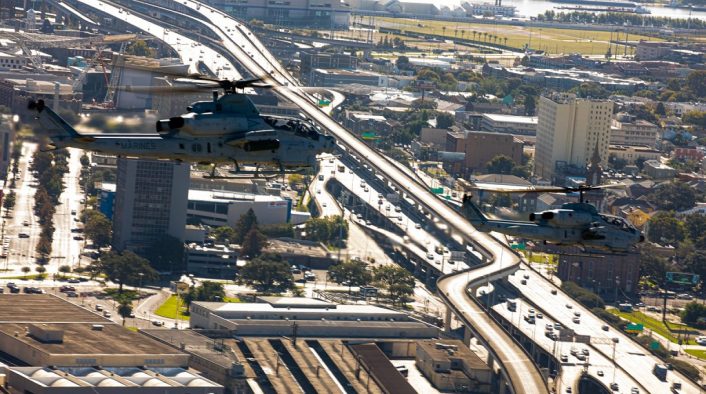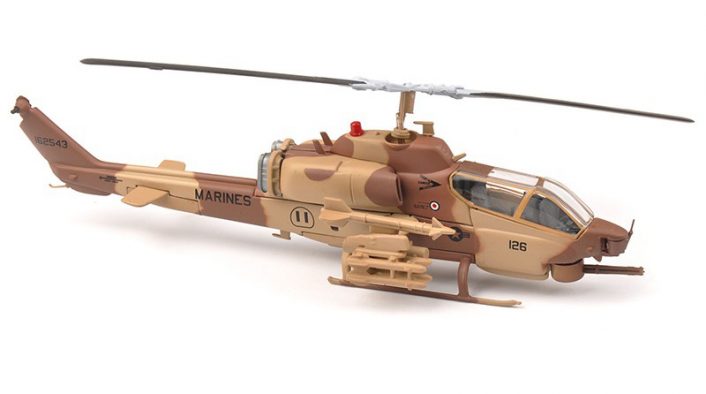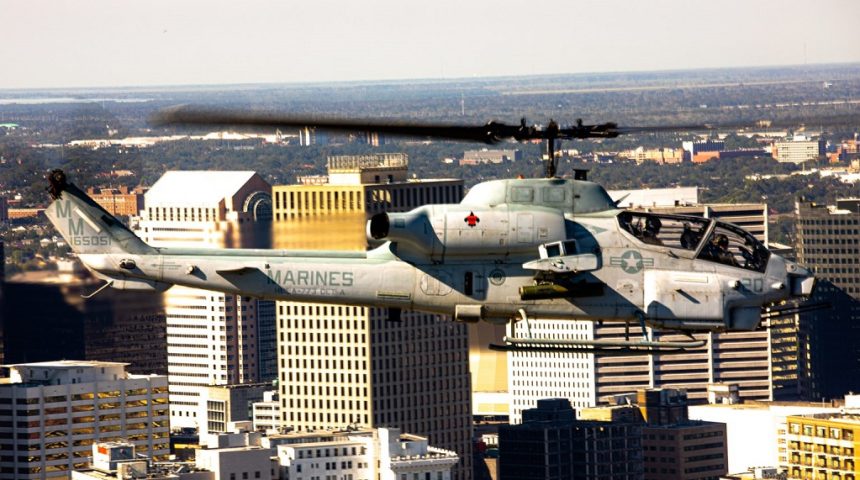The iconic USMC attack helicopter is replaced by the upgraded AH-1Z Viper after 34 years of service and almost one million flight hours.
The United States Marine Corps retired the AH-1W Super Cobra with an official final flight by the New Orleans-based “Red Dogs” of Detachment A – Marine Light Attack Helicopter Squadron (HMLA) 773 on October 14, 2020 during the “Whiskey Sundown Ceremony”. The name of the ceremony comes from the unofficial name of the helicopter, “Whiskey Cobra”, after the NATO phonetic alphabet pronunciation of the “W” in the helicopter’s mission design series nomenclature.
The iconic Super Cobra, descendant of the Vietnam era AH-1 Cobra, flew for the first time in 1983 as AH-1T+ and was introduced into service three years later. Since then, the fleet of 179 helicopters served the USMC for 34 years and flew for 933’614 hours, as of August 2020, taking part to multiple combat operations as Operation Desert Storm, Iraqi Freedom and Enduring Freedom, Restore Hope, Deny Flight (notably providing support during the rescue of the USAF F-16 pilot Capt. Scott O’Grady) and more recently over Libya against ISIS.
“The AH-1W Super Cobra has served admirably and leaves a remarkable legacy of on-time, on-target attack helicopter support for our Marines,” said Col. David Walsh, the program manager for Light/Attack Helicopter Programs (PMA-276). “Although the AH-1W chapter is closing, the AH-1Z Viper stands ready with even greater capability to support our Marines for years to come.”
The USMC obtained a specifically designed helicopter, compared to the original U.S. Army Cobra. Their first variant, the AH-1J Sea Cobra, was the first twin engine Cobra and the first to feature a three-barrel 20 mm M197 based on the heavier six-barrel M61 Vulcan. The next variant, the AH-1T, was the first to feature a precision engagement capability with the BGM-71 TOW. The latest development, the Super Cobra, added more powerful engines, the AGM-114 Hellfire and the AIM-9 Sidewinder.

The AH-1W is replaced by a further upgraded variant, the AH-1Z Viper known also as “Zulu Cobra”, with a four-blade rotor, new sensor turret, Helmet Mounted Displays, bigger stub wings which allow also the mounting of the AIM-9 on the wingtips without reducing the air-to-ground payload and the APKWS laser-guided rockets. The most notable feature is the 84% component commonality with the UH-1Y Venom, also called “Super Huey” or “Huey Yankee”.
A little-known fact is that both the AH-1 and the UH-1 belong to the same Huey family, even if they had different missions. As a matter of fact, all HMLA squadrons operated both the AH-1W and UH-1N, the latter retired in 2014 after a sundown ceremony again at HMLA 773, and now they continue to operate the AH-1Z and UH-1Y.
Close Air Support missions are usually flown by mixed formations of one Cobra and one Huey, providing an array of weapons (7.62 mm GAU-17/M134 minigun, 12.7 mm GAU-21/M3 heavy machine gun and 70 mm rockets for the UH-1 and 20 mm M197 cannon, 70 mm guided and unguided rockets and AGM-114 missiles for the AH-1) for a range of different situations where the Marines could need support, providing very precise fire support even during the delicate Urban CAS. This mission is highly emphasized during the Weapons and Tactics Instructor Course (WTI) at MCAS Yuma.
A total of 179 AH-1Ws were delivered from 1986 to 1999, however the retirement won’t be the end for many of them, as an unspecified number of helicopters will be remanufactured into AH-1Z Vipers, continuing the legacy of the Cobras in the USMC. We cannot exclude also the repurpose of some airframes for other roles, like the former U.S. Army AH-1Fs now designated as Bell 209 and converted in a “Firewatch Cobra” configuration for the U.S. Forest Service, used to relay information to ground crews about the direction and strength of a fire by using infrared cameras and GPS and to help firefighting aircraft make more accurate water or fire-retardant drops.










